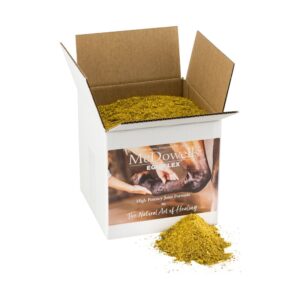Horses have three different types of joints – fibrous joints, cartilaginous joints and synovial joints. Often joint issues are seen as an issue for older horses but our focus should be on supporting joint health throughout a horse’s whole life…
The first type of joint is the fibrous joints, which are the immobile joints found between the bones in your horse’s skull and between the shafts of some long bones. They do not move and are therefore are less likely to cause issues.
The second type is a cartilaginous joint. An example of cartilaginous is in a horse’s spine, pelvis and growth plates. They also have limited movement.
The third is the synovial joints. Synovial joints make up the majority of joints in a horse’s leg. There are eighteen synovial joints in your horse’s body and six different kinds of synovial joints. They have the most movement and are more suffer disease and injury.

But a joint is more than simply the union of two or more bones; the joint is actually also considered an organ (5)!
The synovial joint has a space where the synovial fluid lies. The synovial bathes the joints and tendons, lubricates the joints, absorbs impact and is like a ‘joint oil’. It also provides growth factors, provides oxygen and nutrition for the joint. And don’t forget the synovial membrane! It is a lining along the inner surface of the capsule.
There are 205 bones in the horse’s skeleton. Twenty of these bones are in each foreleg and 20 in each hind limb (4). These are connected via tendons, ligaments, and cartilage. Joints can become damaged through abnormal forces acting on normal cartilage or normal forces acting on abnormal cartilage (5).
Joint health should be a consideration for all horse owners – for performance horses, general riding horses, young growing horses and our ‘oldies’. Their joints make up a large part of their general wellbeing and quality of life.
So how can you ensure that every joint has the nutrition it needs to function optimally??
Diet and nutrition
Feeding and care for joints is vital for horses. It is essential that the base diet contains the right trace minerals, vitamins and fatty acids. Proper nutrition, from gestation and beyond, will ensure joints remain healthy for as long as possible.
Keeping your horse at an average ideal weight means there’s less impact and demand on joints. If a horse is carrying extra weight, there will be increases stress on the joints.
Most people feeding joint supplements are used to seeing and using artificial looking white powders. That’s why McDowells created EquiFlex. It’s the best of herbal medicine and the best science available, combined in to one powerful formulation.
McDowells Recommendation
Ingredient breakdown:
MSM (Methylsulfonylmethane) has a lot of supportive research to back up claims that it reduces joint pain, and acts as an anti-inflammatory. MSM is a rich source of organic sulphur that aids in reduces muscle damage, reducing pain & stiffness, boosting immunity. It is vital for soft tissue growth, and is required in the synthesis of the bones to connective tissue.
Glucosamine is used by the body to make other chemicals that build tendons, ligaments, cartilage, and the fluid that surrounds joints. Its production of GAG’s (glucosaminoglycans) in synovial fluid to enhance lubrication.
Equihemp contains both omega-3 and omega-6 fatty acids with a 1:3 ratio. Fatty acids are essential for the normal functioning of a cell.
Turmeric is able to reduce inflammation and the associated pain substantially when added to your horse’s diet alongside pepper.
Rosehips are one of the very best sources of natural Iron and Vitamin C. They also contain biotin for optimum hoof health.
Yarrow counters tissue swelling and inflammation and encourages bone marrow health. Meadowsweet has been traditional used to reduce acids in the body including around the joints.
Follow the link to discover more about Equiflex: https://shop.mcdowellsherbal.com/equiflex.html
References
(1) Equine Joints
(2) Plant Bioactives and Extracts as Feed Additives in Horse Nutrition
(3) Feeding Horses for Joint Health
(4) Synovial Joints and How They Work – The Horse
(5) 5. McIlwraith, C.W. Osteoarthritis (degenerative joint disease): An update. Proceedings of the 11th International Congress of the World Equine Veterinary Association, Guarujá-SP, Brazil. 2009.




